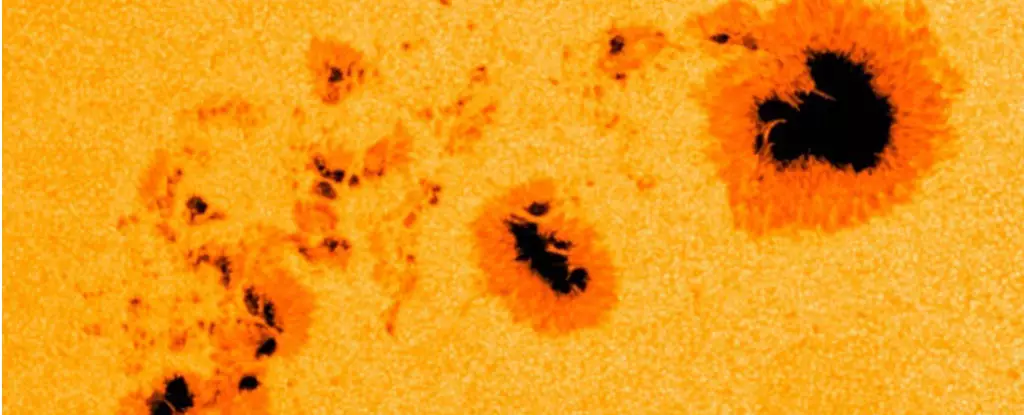The Sun, a radiant orb that has dazzled humanity since the dawn of civilization, acts as the cornerstone of life on our planet. It fuels the growth of plants, governs seasonal changes, and has a profound impact on Earth’s environment. Over the centuries, this celestial body has piqued the curiosity of scholars, leading to significant discoveries that have shaped our understanding of the cosmos and our place within it.
A Historical Perspective on Solar Observation
From ancient China to the Western world, humanity’s fascination with the Sun has yielded countless contributions to navigation and astronomy. The utilization of compass magnets by the ancient Chinese revolutionized direction-finding, emphasizing Earth’s magnetic properties. In the late 16th century, William Gilbert, serving as Queen Elizabeth I’s physician, expanded upon this knowledge with his landmark work on magnetism. He proposed that Earth itself functioned as a magnet, paving the way for a deeper understanding of how celestial bodies, including the Sun, interact.
Galileo Galilei, one of history’s most renowned astronomers, first narrowed his gaze on the Sun through the lens of his telescope in the 17th century. His observations of sunspots marked a transformative moment in astronomy. Galileo discovered that these spots were not mere blemishes on the Sun but rather dynamic entities that altered in size and displayed distinct patterns over time, suggesting a rotation of the Sun itself.
Despite these findings, sunspots remained an enigma. Astronomers engaged in fervent study and documentation, yet a puzzling 70-year gap known as the Maunder Minimum ensued without any recorded sunspots from 1645 to 1715. This period generated speculation and uncertainty in the scientific community, underscoring the complexities of solar behavior and its cycles.
The emergence of sunspots reestablished interest in solar observations, leading to the development of an understanding that these phenomena occur in cycles averaging about 11 years. A leap forward came in 1859 when Richard Carrington, an amateur astronomer and brewery owner, documented a significant solar flare—an event that not only unveiled the dynamic nature of the Sun but established a link between solar activity and terrestrial occurrences.
Following Carrington’s observations, the “Carrington Event” unfolded, resulting in unprecedented magnetic and auroral storms that affected the nascent technology of the time, particularly telegraph systems. The breadth and intensity of the solar-driven storms showcased the Sun’s influence on Earth, compelling us to reconsider the interplay between the two bodies.
Yet, the connection was not immediately clear. Carrington’s contemporaries remained skeptical, treating the association between the solar flare and subsequent storms as coincidental. However, as more observations were gathered, leading astronomers, including George Ellery Hale, were able to draw relationships between solar magnetism, sunspots, and auroras.
The Mechanics of Solar Magnetism
Hale’s significant findings in the early 20th century shed light on the hidden layers of the Sun’s magnetic activity. His research illustrated that sunspots are manifestations of magnetic energy disruptions, each cooler than surrounding regions due to their magnetic grip. This magnetic energy can, under certain conditions, erupt into various forms of radiation.
For instance, while the white light flares observed by Carrington are rare, magnetic energy typically converts into X-ray bursts instead. The gravitational forces near the Sun are remarkable, pushing ejected material and plasma bursts, or coronal mass ejections (CMEs), into the Earth’s vicinity when directed towards our planet.
Should such a CME confront Earth with opposite magnetic polarity, it may trigger extraordinary auroras across the planet, transforming our night skies into brilliant displays of color. Conversely, a lack of alignment might yield minimal effects, yet with continuous research, our understanding of solar interactions advances.
As we remain on the cusp of a significant solar maximum characterized by increased sunspot activity, scientists and researchers are preparing for the ensuing magnetic storms. Predictions suggest that this peak in solar activity may persist for a few years, thereby tantalizing the world with the duality of beauty and peril embodied in solar phenomena.
Our ever-evolving relationship with the Sun challenges us to stay vigilant. As technology continues to advance, understanding solar activity becomes crucial. With historic events like the Carrington Event highlighting the potential consequences of solar storms, we must remain attuned to our Sun’s rhythmic cycles, as the interplay between solar and terrestrial energies continues to unfold in captivating ways.

